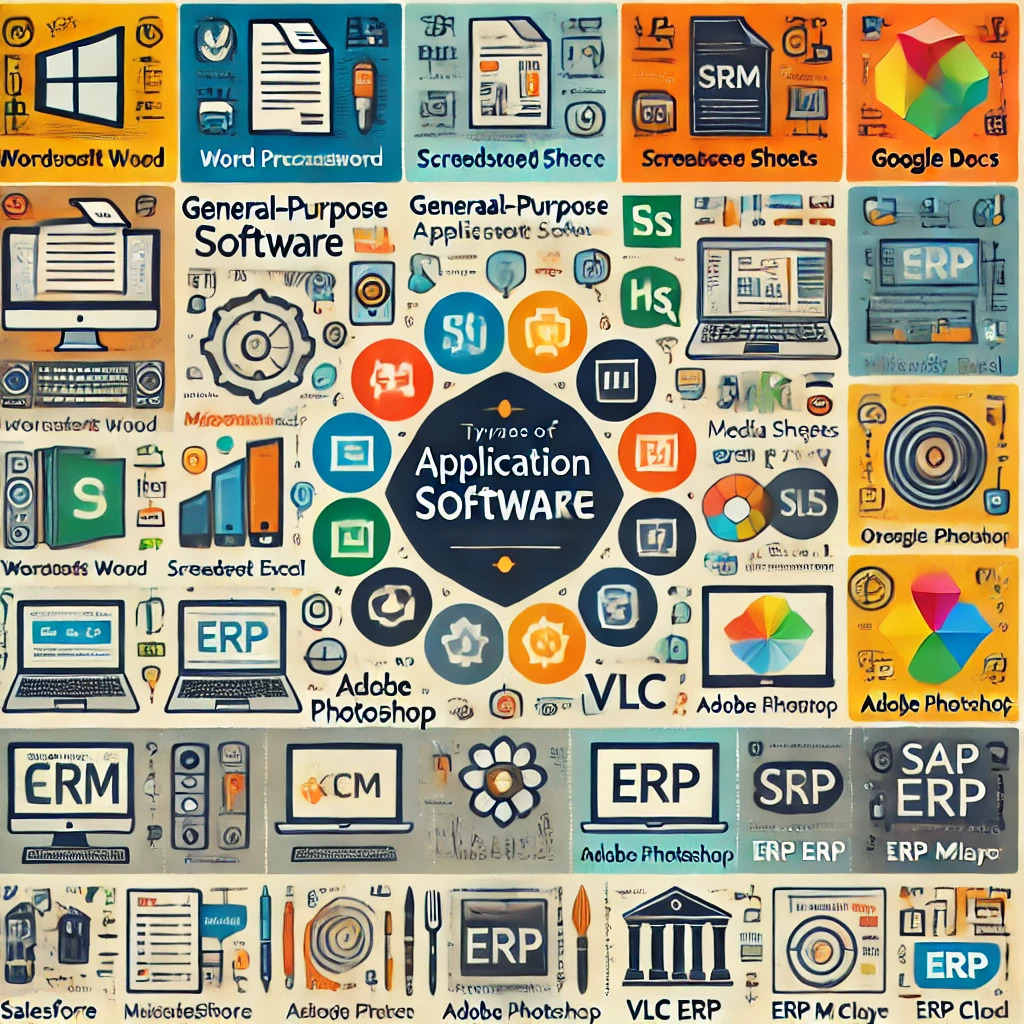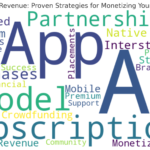In the ever-evolving digital landscape, understanding the various types of application software is essential for both personal and professional use. Application software can be broadly categorized into general-purpose software and specialized business software. This comprehensive guide delves into these categories, providing examples and explaining their uses and benefits.
General-Purpose Software
General-purpose software is designed to perform a wide range of tasks that cater to the general needs of users. These tools are versatile and widely used across different sectors.
- Word Processing Software:
- Examples: Microsoft Word, Google Docs
- Uses: Word processing software allows users to create, edit, and format text documents. These tools are essential for drafting letters, reports, essays, and various other text-based documents. They often include features like spell check, grammar check, and templates for different document types.
Word processing software is indispensable in both personal and professional settings. For instance, students use it for writing essays and reports, while professionals use it for drafting business documents and correspondence. Advanced features like mail merge, collaborative editing, and document templates enhance productivity and ensure consistency in document creation.
- Spreadsheet Software:
- Examples: Microsoft Excel, Google Sheets
- Uses: Spreadsheet software is used for organizing, analyzing, and storing data in tabular form. It supports complex calculations, data visualization through charts and graphs, and features like pivot tables and conditional formatting. These tools are indispensable in fields like finance, accounting, and data analysis.
Spreadsheet software is crucial for data-driven decision-making. Financial analysts use it to model financial scenarios, accountants use it for budgeting and financial reporting, and researchers use it to analyze experimental data. The ability to automate calculations and visualize data through charts makes spreadsheets an invaluable tool for data management.
- Multimedia Software:
- Examples: Adobe Photoshop, VLC Media Player
- Uses: Multimedia software includes tools for creating, editing, and playing multimedia files such as images, videos, and audio. Photoshop is renowned for its image editing capabilities, while VLC Media Player is a versatile media player supporting various audio and video formats.
Multimedia software plays a vital role in creative industries. Graphic designers use image editing software like Photoshop to create visually stunning graphics, while video editors use software like Adobe Premiere Pro to produce high-quality videos. Multimedia players like VLC provide a seamless playback experience for various media formats.
Specialized Business Software
Specialized business software is tailored to meet specific business needs, providing functionality that addresses particular industry requirements.
- Customer Relationship Management (CRM) Software:
- Examples: Salesforce, HubSpot CRM
- Uses: CRM software helps businesses manage interactions with current and potential customers. It centralizes customer information, tracks sales, and supports marketing efforts. Features often include contact management, sales tracking, and automation of routine tasks, all aimed at improving customer relationships and driving sales growth.
CRM software is essential for sales and marketing teams. It helps them track customer interactions, manage leads, and automate marketing campaigns. By providing a comprehensive view of customer data, CRM systems enable businesses to deliver personalized customer experiences and improve customer satisfaction.
- Enterprise Resource Planning (ERP) Software:
- Examples: SAP ERP, Oracle ERP Cloud
- Uses: ERP software integrates various business processes, including finance, HR, supply chain, and manufacturing, into a single unified system. This integration improves efficiency, data accuracy, and decision-making by providing a comprehensive view of business operations.
ERP software is crucial for large organizations with complex operations. It helps streamline business processes, reduce operational costs, and improve collaboration across departments. By providing real-time insights into business performance, ERP systems enable organizations to make informed decisions and respond quickly to changing market conditions.
System Software vs. Application Software
It’s important to distinguish between system software and application software. System software, such as operating systems and utility programs, manages the hardware and basic functions of a computer. Examples include Windows, macOS, and Linux. Application software, on the other hand, performs specific tasks for users, running on top of the system software to provide functionality tailored to user needs.
System software provides the foundation upon which application software runs. For instance, the operating system manages system resources and provides a user interface, while utility programs perform maintenance tasks like virus scanning and disk cleanup. Without system software, application software would not function effectively.
On-Premise vs. Hosted Solutions
Businesses must also decide between on-premise and hosted (cloud-based) solutions for their software needs.
- On-Premise Software: Installed locally on a company’s own servers, providing greater control and security. However, it requires significant upfront investment and ongoing maintenance.
- Hosted Solutions: Hosted on remote servers and accessed via the internet, offering flexibility, scalability, and cost savings. Cloud-based solutions reduce the need for in-house IT infrastructure and support.
On-premise software is ideal for organizations that require full control over their software and data. It offers enhanced security and customization options but involves higher costs for hardware, maintenance, and IT support. Hosted solutions, on the other hand, offer cost-effective and scalable options with minimal upfront investment. They are ideal for businesses looking to reduce IT overhead and benefit from the latest software updates and features without the hassle of managing hardware and infrastructure.
Conclusion
Understanding the different types of application software is essential for choosing the right tools to enhance productivity and streamline operations. Whether for personal use or business needs, selecting the appropriate software can lead to significant improvements in efficiency and effectiveness.
For a more detailed exploration, visit the full article: Types of Application Software: Examples & Uses.
By leveraging the right application software, individuals and organizations can achieve their goals more effectively, making informed decisions that align with their specific requirements.
This post was created with our nice and easy submission form. Create your post!






Comments
0 comments